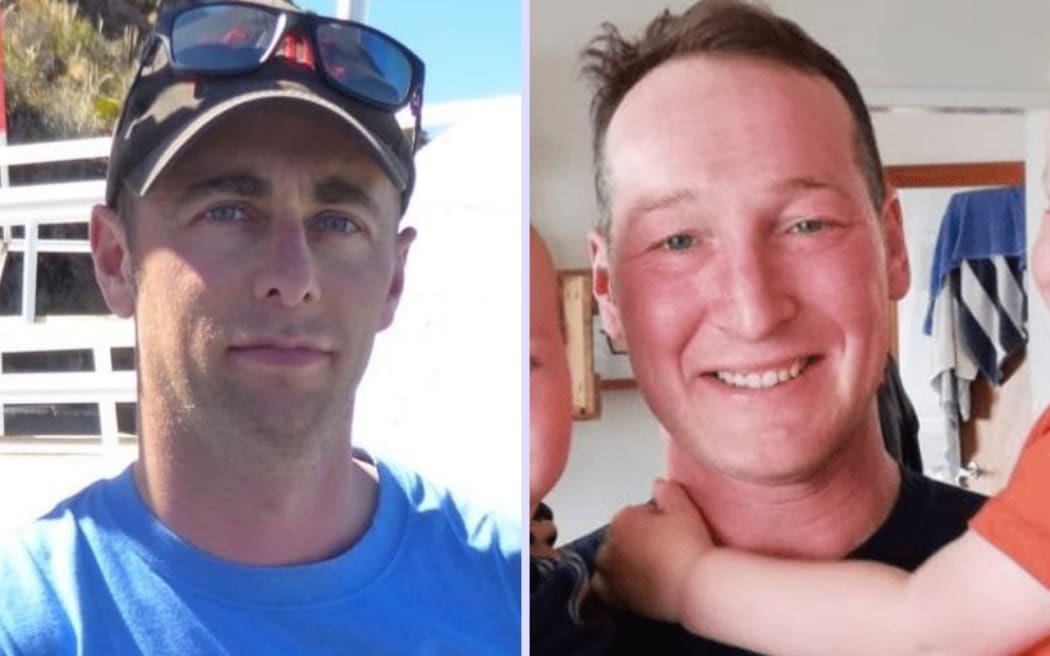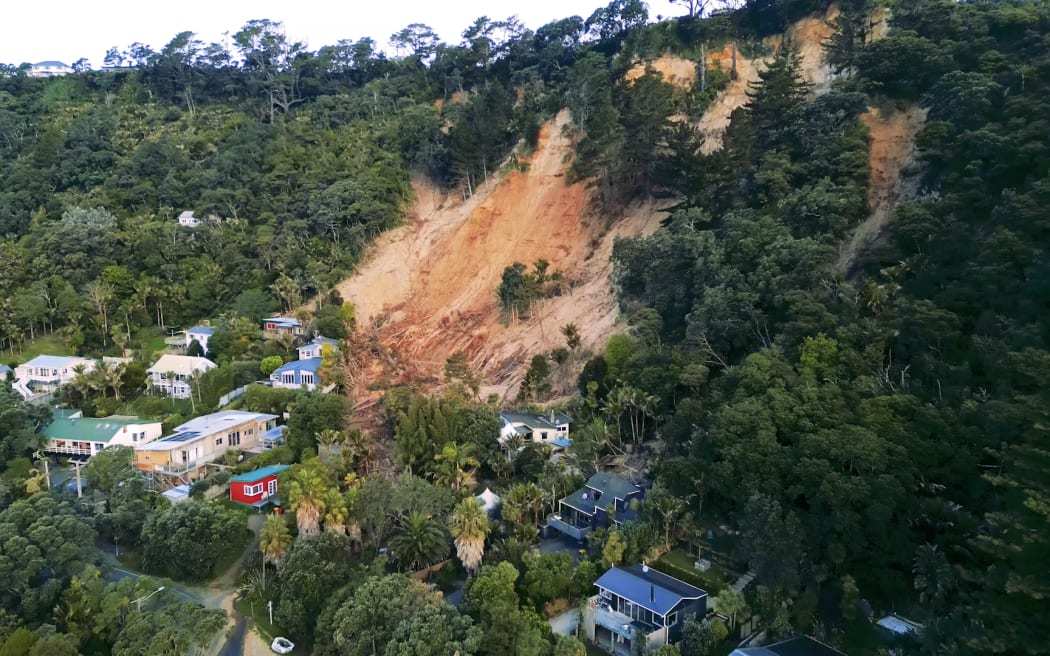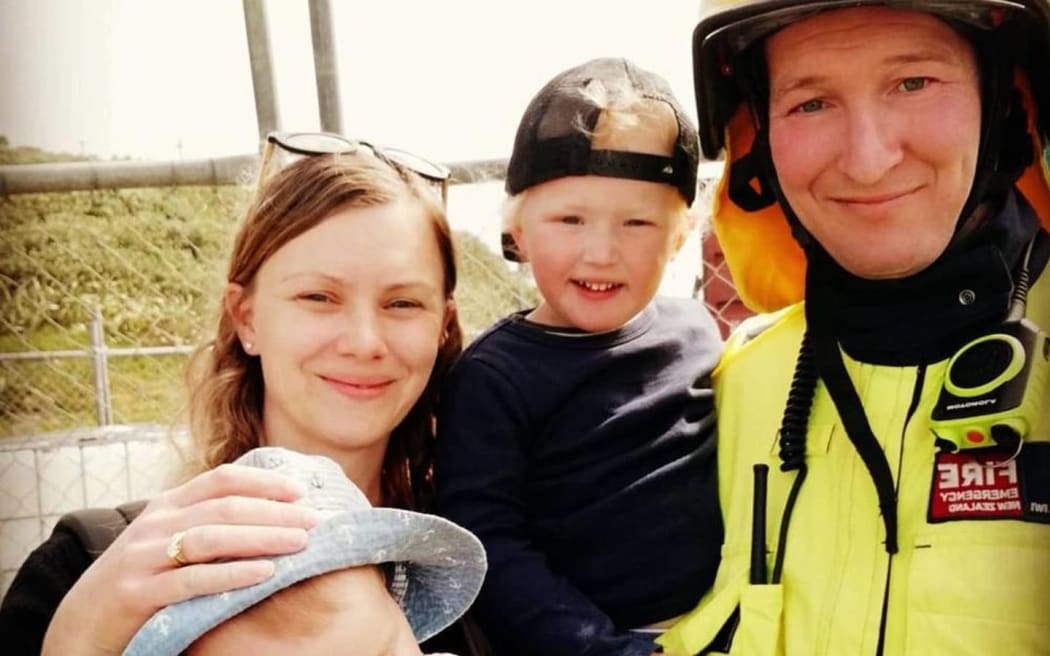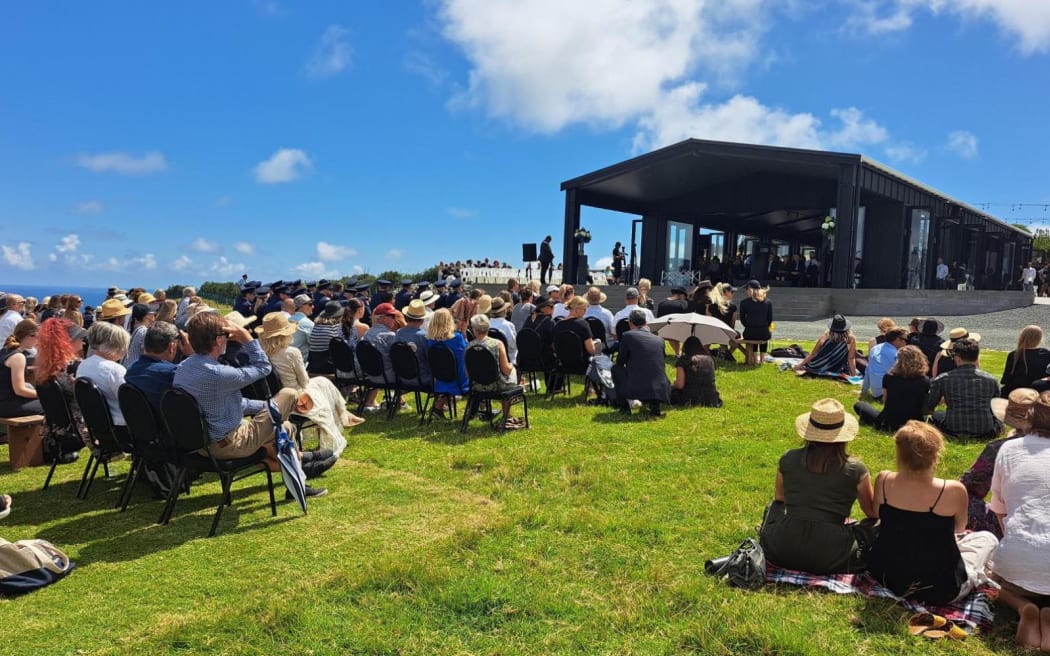How the Muriwai firefighter tragedy unfolded

A report into the deaths of two firefighters during Cyclone Gabrielle has revealed the terror faced by rescuers when a second massive landslide struck as they were working frantically to save their colleagues.
An independent investigation released today into the deaths of Muriwai volunteer firefighters Dave van Zwanenberg and Craig Stevens found Fire and Emergency NZ did not identify landslides as a hazard to its firefighters or train them to avoid the risk.
The report also lays out, for the first time, the sequence of events during a tragic and terrifying night at the beachside settlement west of Auckland.
The impact of Cyclone Gabrielle was first felt at Muriwai late on the evening of February 13.
It was training night so most volunteer firefighters were at the station when the first call, for a downed tree blocking a road, came in about 8.50pm.
After that the brigade's two fire appliances drove around the settlement assessing damage and helping out where needed in the torrential rain.
Van Zwanenberg and Stevens were in one appliance, a purpose-built ute, with Muriwai's fire chief.
They had stopped on Motutara Road to check some flooding and help move a caravan when they went to investigate a nearby house where the occupants had reported water entering the bottom storey.
That house was about 30m up a steep driveway and at the bottom of a 60m hill.
They made their way to the house on foot - arriving at 10.23pm, just four minutes after the occupants had evacuated - and decided to dig a trench to divert some of the water flowing down the hill.
The fire chief texted the crew back at the station, asking them to come and lend a hand, then went back down the drive to fetch a shovel.
He was standing at the rear of his truck when, according to the report, "he heard a loud roar and looked up suddenly to see the hillside coming down towards him".
The large landslide destroyed the house and pushed the wreckage down the hill onto the road in front of the fire appliance.

It was just six minutes and 49 seconds after they had arrived at the house, and just over 10 minutes after the occupants evacuated.
The fire chief ran to the side of a nearby building for protection and, once the noise had stopped, heard someone calling for help from a neighbouring house that had also been wrecked.
The fire chief helped the person, who was trapped under the roof, to safety, then sent a priority message to FENZ headquarters saying two people were trapped in a destroyed house.
He could hear Stevens calling for help on his radio but it was jammed on so the chief couldn't reply.
The other fire appliance arrived moments later with a crew of four, along with firefighters in private vehicles and locals offering to assist.
They found Stevens within minutes, trapped under part of the roof in the middle of Motutara Road.
There was, however, no sign of van Zwanenberg.
The report's authors said the conditions were extremely arduous, with severe gale-force winds and torrential, horizontal rain. It was also pitch dark with no power in most of Muriwai.
Outside help arrived in the form of Kumeu Fire Brigade just after 11pm. They were followed by Henderson and Te Atatū, along with a specialist Urban Search and Rescue crew from Papatoetoe who arrived at 11.34pm.
On the way they faced extremely challenging conditions, which deteriorated dramatically the closer they got to the coast.
"The high winds, surface flooding, and fallen trees and power lines, led many responders to describe it as the most frightening trip they had ever experienced," the report stated.
As specialist rescue teams arrived, they took over the search effort.
"The initial rescuers had worked tirelessly, in arduous and risky conditions, with the knowledge that their close colleagues and friends were trapped in the landslide. It was very cold, and some were showing signs of hypothermia when they were relieved."

Extricating Stevens, who was trapped from the neck down, was difficult. He was, however, conscious and talking to the medics treating him.
As the search for van Zwanenburg continued, rescuers were acutely aware of the risk of further landslides.
A raft of risk-mitigation measures was put in place, including safety officers, observers, scene lighting, evacuation signals and escape routes.
A geotechnical engineer advised staying close to the original landslide was the safest place to be, because another slip in the same place was unlikely.
At 12.10am, a smaller slip about 20m away moved another house off its foundations.
That was followed at 12.30am by another landslide as large as the initial slip.
"The thundering roar of the landslide and the evacuation air horn led rescuers to run to a safe area. In less than a minute, when the noise stopped, they resumed the rescue," the report stated.
Stevens was extricated just before 2am. He had been trapped for three hours and 13 minutes.
He taken to hospital in a critical condition on roads that had to be cleared of fallen trees and powerlines.
With Stevens rescued, all machinery was turned off and listening devices placed under the rubble in the hope of detecting sounds from van Zwanenberg's radio. Search dogs were also deployed.
After 3am the search team reluctantly concluded there was no hope of finding van Zwanenberg alive.

Stevens was hypothermic when he was rescued an hour earlier and the rain had worsened since then.
The search, which was by then a recovery operation, resumed at daylight.
Van Zwanenberg's body was found on the morning of February 15, 35 hours after the landslide. He was about 12m from where Stevens had been rescued.
It was apparent he had died instantly when the landslide struck.
Stevens died in hospital the following day.
Both Stevens, who was 39, and van Zwanenberg, 41, were married with two young children.
Both were farewelled at Parihoa Farm in Muriwai in poignant services that drew hundreds of friends, family members, local residents and firefighters.